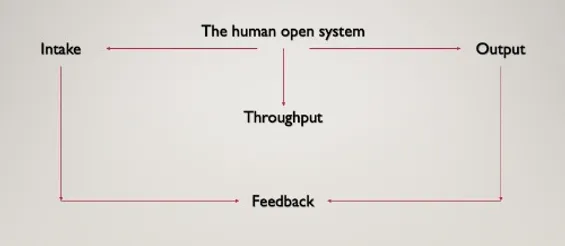The application of theory to occupational therapy practice is referred to as a model of practice. This process is achieved through several means, such as the development of specific assessments and the articulation of principles to guide intervention.
Models of practice are not intervention protocols but instead serve as a means to view occupation through the lens of theory with the focus on the client’s occupational performance. Models of practice often serve as a mechanism to engage in further testing of the theory.
The main purpose of a model of practice is to facilitate the analysis of the occupational profile and consider potential outcomes with selected interventions. Models should be applicable across settings and client groups rather than being designed specifically for a single diagnostic group.
From a very colloquial expression, a model of practice is where the clinician “puts on the OT eyeglasses” to bring into focus the client’s needs and abilities, various contextual issues, and engagement in occupation.
1. Model of Human Occupation (MOHO) FOR-
In the model of human occupation (MOHO),44 the engagement in occupation is understood as the product of three interrelated subsystems that can not be reduced to a linear process. These three subsystems work together to produce operational performance.
The volitional subsystem refers to the client’s values, interests, and personal causation. A client may clearly identify the values and interests of a clinician but then express a sense of incompetence to engage in the desired occupation. Volition is the client’s thoughts and feelings, including occupational choices. The habituation subsystem refers to the habits and roles that are often critical to a sense of self.
Proponent – Gary Keil Hofner.
(A). Theoretical base-

An Open system consists of four distinct processes that function for maintenance or change –
1. Intake– It refers to the importation of energy or information into the system.
2. Throughput– It refers to the transformation of energy or information for assistance by the system and the self-transformation of the system to accommodate the incoming of energy and information.
Self-transformation – is defined as the system’s ability to generate new information for changes. It refers to the dynamic integration within the cycle of an open system and its ability to take existing information, produce and output does create new information that may modify the existing system.
3. Output – it refers to the external action or behaviour of the system that is what the system does within the environment or to the environment.
4. Feedback – refers to the result of the process and the consequences or next steps of the previous section on the system.
Occupational behaviour – It is an activity in which a person engages during most of their waking time. It includes activities that are playful, restful, serious and productive.
Three important occupational behaviour are-
-
Competency
-
Achievement
-
Occupational role
1. Activities of occupational behaviour are-
-
Work
-
Play
-
Activities of daily living
2. Play and work-
-
Characteristics and purpose of play
-
Characteristics and purpose of child’s work
-
Motivation
-
Sense of competency and mastery
3. Environment
4. Hierarchy –
There are three subsystems:-
(a). Volition (Willingness)
-
Personal causation or a person’s beliefs and expectations
-
Interest
-
Value
-
Temporal orientation
(b). Habituation-
-
Rolls
-
Habits
(c). Performance skills
Assumptions –
-
Occupation is fundamental to human experience and is the absence of resistance.
-
Human occupation stems from an innate desire to explore and master the environment.
-
A hierarchy of subsystems ranges from volition and habitual Asian to performance. These subsystems exist within each human.
-
The self-transformation of an open system is hierarchical. This results in change and growth in the open system through the hierarchy of subsystems.
-
Temporality is a universal attribute of work and play and is seen to participate in occupation throughout life.
-
Modification within an open system and hierarchical. Adaptive changes take place in the direction of increased complexity and differentiation within the system. One must, therefore, recognise the hierarchy of subsystems and levels of differentiation within each subsystem.
-
Work and play are symmetrical. This is characterised by the division of time between work and play on a regular basis.
-
The play assumes the work by restoring the energy within each individual, which strengthens the worker’s role. Play, therefore, continues to hold value throughout life in relation to occupational behaviour.
(B). Function-dysfunction continuum –
-
Self-image
-
Personal value
-
Age-appropriate interest
-
Age-appropriate rules
-
Age-appropriate habits
-
Age-appropriate skill development
(C). Behaviour indicative function dysfunction–
-
Overall assessment
-
Assessment of performance of system or skills
-
Evaluation of the common Asian subsystem
-
Assessment of violation subsystem
(D). Postulates regarding change and intervention –
-
Those that relate to the use of MOHO.
-
Those that relate to the volition subsystem.
-
Those that relate to the actuation of the system.
-
Those that relate to performance subsystems.
2. Ecology of Human Performance-
The ecology of human performance (EHP) was not intended to be used solely within the occupational therapy profession, but rather to serve as a mechanism for understanding human performance across professions.
An important concept expressed in the EHP is the interaction of the person, the task (activity demands), and the context. Occupational performance is intertwined with, and the product of, the interaction of these three variables. EHP is a client-centred model in which each person is viewed as unique and complex and includes past experiences, skills, needs, and attributes.
The task is understood as the objective and observable behaviour to accomplish a goal. The context includes the person’s age, life cycle, and health status from a perspective of the cultural and societal meanings of each. Context also addresses the physical, social, and cultural factors that influence performance.
EHP recognizes that these three factors influence each other and that the person and task are inextricably linked with the context. Performance is the product of the person engaged in a task within a context.
Five intervention strategies are –
-
Establish/restore. Although focused on improving the person’s abilities and skills, the intervention includes the context for performance.
-
Alter. Intervention is designed to alter the contextual factors to foster occupational performance; an example would be home modifications to allow wheelchair access.
-
Adapt/modify. The task or context is adapted or modified to support performance, such as the use of a reacher to obtain objects or using elastic shoelaces to eliminate the need to tie shoes.
-
Prevent. Intervention may address the person, the context, or the task to prevent potential problems from occurring; examples would be teaching the client back-safety techniques to prevent back injuries, removing rugs in an environment to reduce the risk of falls as a contextual prevention method, and turning down the water temperature for a client with sensory problems to reduce the risk of burns when bathing.
-
Create. The intervention addresses all three variables of the person, task, and context and is designed to develop or create opportunities for occupational performance.
3. Person-Environment-Occupation Model-
The person-environment-occupation model (PEO) shares characteristics with EHP where occupational performance is seen at the intersection of the person, environment, and occupation. It is a client-centred approach, but equal emphasis is placed on the environment and the occupation when designing the intervention.
PEO defines the person as a dynamic and changing being with skills and abilities to meet roles over the course of time. The physical, social, cultural, and institutional factors that influence occupational performance are all part of the environment. Occupations include self-care and productive and leisure pursuits.
PEO further differentiates the progression of an activity, a small portion of a task, a task that is a clear step toward an occupation, and the occupation itself, which often evolves over time. An example would be the activity of safely handling a knife.
This is only a small portion of the task of making a sandwich, which is considered a part of the meal preparation occupation. Occupational performance is the result of the person, environment, and occupation inter-acting in a dynamic manner.



